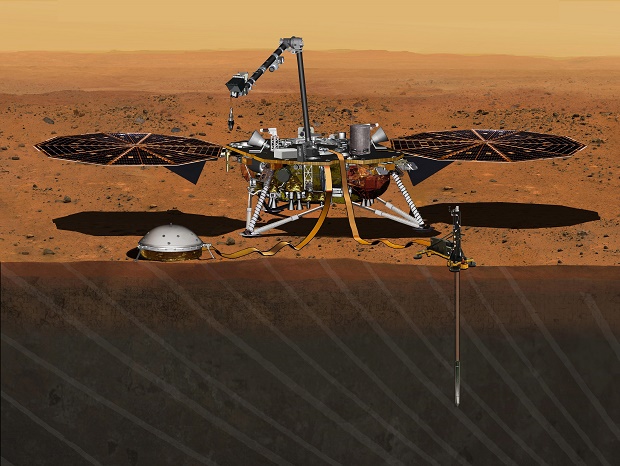NASA: Leak in French instrument may stall next Mars mission

This August 2015 artist’s rendering provided by NASA/JPL-Caltech depicts the InSight Mars lander studying the interior of Mars. The spacecraft, which is scheduled to launch for Mars in March 2016, has a leak that could delay the mission. On Thursday, Dec. 3, 2015, NASA said that the leak is in one of two prime science instruments. AP
CAPE CANAVERAL, Florida — A NASA spacecraft that’s supposed to fly to Mars and land on the red planet next year has a leak that could delay the mission.
NASA said Thursday that the leak is in one of two prime science instruments. The seismic experiment belongs to the French Space Agency.
French engineers are scrambling to fix the leak, located in the vacuum container for the main sensors. The instrument is still in France. It’s supposed to ship to the Southern California launch site for installation next month in the InSight lander.
For now, mission managers remain committed to a March launch. The window runs from March 4th through the 30th. After that, NASA would have to wait until 2018. Launch opportunities for Mars only occur every two years.
RELATED STORIES
NASA: Sun stripping away Martian atmosphere, left dry planet
Nasa finds ‘signs of life’ on Mars
How to prepare for Mars? NASA consults Navy sub force














